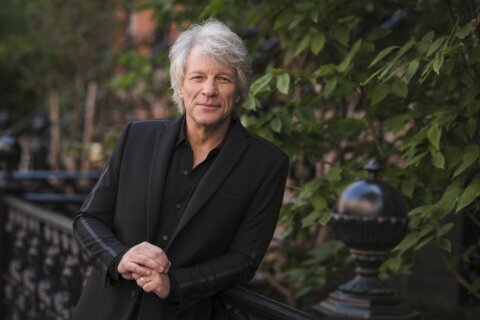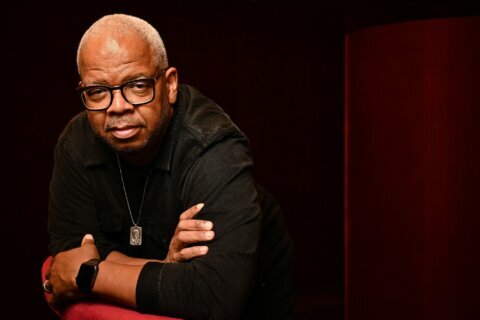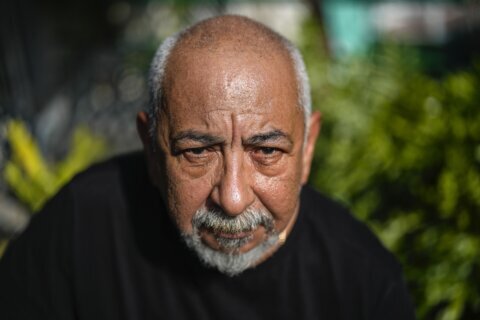No filmmaker has explored American crime more poetically or prolifically as Martin Scorsese with “Mean Streets,” “Taxi Driver,” “Raging Bull,” “Goodfellas,” “Casino,” “Gangs of New York,” “The Departed” and “The Wolf of Wall Street.”
It was only a matter of time before the master took on Jimmy Hoffa’s infamous disappearance in “The Irishman,” a 3 1/2 hour epic that is in many ways the antithesis of “Goodfellas,” featuring many of Scorsese’s auteur signatures but presented in a quiet, mournful tone asking if the gangster life was really worth it.
Based on Charles Brandt’s 2004 book “I Heard You Paint Houses” (code for blood splattered on walls), the story follows Irish-American Frank Sheeran (Robert De Niro), a Pennsylvania truck driver turned hitman for mobster Russell Bufalino (Joe Pesci). He soon becomes the bodyguard for Teamsters union leader Jimmy Hoffa (Al Pacino), who goes missing in 1975 never to be found.
Rumors have swirled for decades over Hoffa’s fate, some claiming his body is buried beneath New York Giants stadium. Oscar-winning screenwriter Steve Zaillian (“Schindler’s List”) doesn’t leave us hanging with an ambiguous ending. He provides a definitive answer, but the script is less concerned with the mystery than the character study of those involved, using the framing device of Frank sharing his deadly memories from the sterile confines of his retirement home.
As such, De Niro does the heavy lifting, playing the same mobster from young man to aging retiree. Much has been made of the digital de-aging process, which takes some getting used to as you can’t recreate the brash De Niro circa Travis Bickle on a Jack Byrnes body frame. What doesn’t change are De Niro’s piercing eyes, holding court with Ray Romano, rubbing elbows with Harvey Keitel and warning Pacino he’s about to be whacked in not so many words: “It’s what it is.”
While De Niro is our stoic vessel, Pacino steals the show as Hoffa, whose hubris gives him a tragic sense of invincibility. Curiously, Hoffa doesn’t appear until an hour into the picture, but once he arrives, you can’t take your eyes off him. His most compelling scene finds him irked that Anthony Provenzano (Stephen Graham) arrived more than 10 minutes late to a meeting in casual Floridian clothes. Naturally, he rips his rival to shreds like Moe Green in “The Godfather.”
While Pacino could earn his first Oscar nomination since “Scent of a Woman” (1992), he’ll have to compete against Pesci, who came out of retirement for likely his final appearance. This time, Pesci plays the opposite of his hothead Tommy DeVito in “Goodfellas,” playing more of the strong, silent Jimmy Conway, doing most of his talking with his eyes with devilish details between the glances. His best work is a cooking scene where he’s symbolically cooking up a murder plot.
Such a moment is signature Scorsese, who paints the frame with layers. We know we’re in good hands right from the opening single-take through a retirement home to The Five Satins’ “In the Still of the Night,” an ironic twist on his iconic Copacabana shot in “Goodfellas.” We also get freeze frames like “Goodfellas,” only now with superimposed text of each character’s eventual cause of death.
And yet, while you’ll recognize many of the camera techniques, the tone is quite different. Rather than flashy jump cuts, the pacing is more patient, melancholic and decidedly less violent. Henry Hill missed the gangster life as he was stuck in suburbia eating egg noodles and ketchup, but Frank Sheeran regrets his choices like a lonely Michael Corleone collapsing at the end of “The Godfather: Part III.”
The film is also more “Godfather” than “Goodfellas” in its political commentary. “The Irishman” suggests Joseph Kennedy’s mafia ties got his son John F. Kennedy elected, before bad blood from the Bay of Pigs Invasion led to his assassination. It also shows Robert F. Kennedy’s “Get Hoffa” squad building to his arrest in 1964, before being pardoned by President Richard Nixon in 1971.
On the downside, we don’t get any strong female characters like Diane Keaton standing up to Michael Corleone or Lorraine Bracco standing up to Henry Hill. There are only two women of note in “The Irishman,” one a dutiful wife covering for her bloody husband; the other Frank’s daughter Peggy (Anna Paquin), who disowns her father when he comes asking for forgiveness — too little, too late.
This could affect its Best Picture chances heading into Oscar season where diversity is the new name of the game. Will women and people of color resist a dirge to a dwindling demographic of older, whiter, male viewers in the same year as Greta Gerwig’s “Little Women?” Or will “The Irishman” duke it out with Quentin Tarantino’s “Once Upon a Time in Hollywood” for throwback macho glory?
Either way, the 76-year-old Scorsese finds a kindred spirit in Sheeran, reflecting back on his own career, which has consistently featured two thematic strands: violence and religion. If “Silence” was his apotheosis on such films as “The Last Temptation of Christ,” “The Irishman” is his final verdict on a career of gangster pictures. In the end, Marty wants us to know that it’s not a life to be glorified, but one that leaves the hitman alone with regret from which he can’t repent.
Such a lonely experience isn’t intended for mass audiences — and the rollout reflects that. Cinephiles will have to find it in arthouse theaters or quietly on their couches, as “The Irishman” is being released in a very small number of theaters in the D.C. area on Nov. 8 before hitting Netflix on Nov. 27. Surely if this were a major theater release, trusty editor Thelma Schoonmaker would have had to trim it by about an hour, but Netflix is giving Scorsese well-earned carte blanche.
Netflix is also sparing no expense in its awards campaign, recently paying to fly critics out and put them up at hotels for the Los Angeles premiere at Grauman’s Chinese Theatre. As Jake LaMotta once said, that’s entertainment. For decades, Scorsese was unfairly snubbed because his gritty masterpieces lost out to higher-dollar prestige pictures. My how the tables have turned. Whack or be whacked. As Sheeran told Hoffa, “It’s what it is.”









